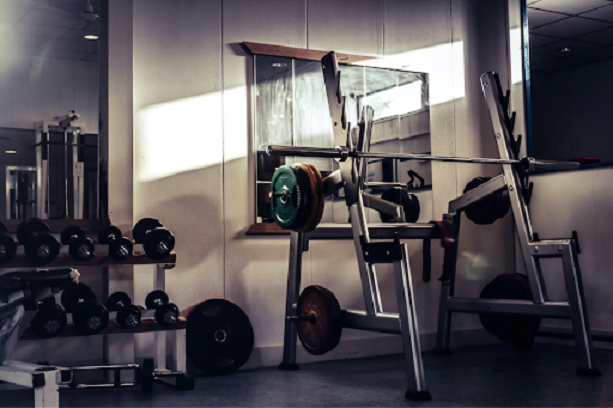Gym accidents sound rather far-fetched on the surface, yet in reality, they can be extremely common – and even serious. Whether you are a casual gymgoer or an avid fitness enthusiast, it’s important to understand the potential risks of working out and how you can protect yourself from injury. From unexpected hazards such as faulty gym equipment or overcrowding to bodily strain through repetitive exercise movements, popular gyms present a variety of hidden dangers that can easily lead to physical harm. In this blog post, we’ll explore some essential warning signs, tips for avoiding injury in the gym setting, and other advice so that you can stay safe during your next trip there!
Potentially Lethal
There is a darker side to fitness culture, particularly when it veers to the extreme. Overexertion can lead to heat stroke, a potentially lethal condition characterized by an abnormally high body temperature, altered mental state, and organ damage. Similarly, heavy weightlifting without proper form or supervision could result in severe injuries, such as spinal damage or torn muscle tissue. Having a team of excellent lawyers behind you is a must in the event of severe injury caused by gym equipment failure or negligent supervision. Ultimately, prioritizing safety and knowing your limits can help prevent these catastrophic outcomes.
Inadequate Supervision
A significant risk factor for gym accidents is inadequate supervision. This can occur when fitness facilities are understaffed or when gym staff are inexperienced and lack the necessary training to guide gym users safely. In a crowded gym environment, it’s not uncommon for users to misuse equipment or perform exercises with incorrect form, which may lead to severe injuries. Furthermore, staff members who are not adequately trained in first aid and emergency response procedures may not be equipped to handle accidents in a timely and effective manner. Therefore, it’s crucial to ensure that your fitness center has a sufficient number of well-trained staff to provide proper guidance and supervision.
Hygiene and Cleanliness
Another aspect that cannot be ignored when discussing gym safety is hygiene and cleanliness. Gyms can be a breeding ground for bacteria and viruses due to the high number of people using the same equipment and facilities. Poor hygiene practices can lead to the spread of skin infections, colds, and other illnesses among gym users. Fitness centers must uphold high standards of cleanliness, frequently sanitizing equipment, locker rooms, and shared spaces. As a gym user, practicing good personal hygiene, such as wiping down equipment after use and washing your hands frequently, can significantly reduce your risk of contracting or spreading illnesses.
Overcrowding Issues
An equally important concern in the realm of gym safety is overcrowding. A packed gym not only hampers your fitness routine but also poses a significant risk of accidents and injuries. In an overcrowded environment, gym-goers may find themselves working out too close to each other, increasing the likelihood of inadvertent collisions or mishaps involving gym equipment. Overcrowding can also lead to longer wait times for machines, encouraging some individuals to rush their workouts or use equipment improperly out of frustration. It’s important, therefore, to choose off-peak hours for your workout, or consider gyms that enforce capacity limits or require pre-booked slots to ensure a safer, less crowded workout environment.
Unmaintained Facilities
Unmaintained or poorly maintained facilities contribute significantly to gym-related accidents. This can range from worn-out equipment, slippery floors, and broken tiles, to malfunctioning locker room facilities. For instance, treadmills in poor condition can cause users to trip or fall, while cracked weight plates could break apart during use, leading to potential injury.
Similarly, showers and pool areas without regular maintenance could develop harmful mold or bacteria. It is essential that gym management conducts regular maintenance checks and promptly addresses any issues. As a gym-goer, it’s in your best interest to report any maintenance issues you notice to the staff so that appropriate action can be taken. The overall state of the gym’s facilities can be a strong indicator of its commitment to user safety.
Emergency Response Protocols
An often overlooked aspect of gym safety is the establishment and enforcement of effective emergency response protocols. These essential procedures are designed to address accidents or medical emergencies swiftly and efficiently, minimizing potential harm to gym-goers. Staff members should be trained in first aid and CPR, and know how to activate the emergency response system, which could involve calling 911, administering first aid, or using an Automated External Defibrillator (AED).
The gym should also have marked emergency exits and evacuation plans in case of fire or other serious incidents. Regular safety drills can help ensure that both staff and gym users are familiar with the protocols and know what actions to take in an emergency. This proactive approach to emergency preparedness not only fosters a safer gym environment but also provides gym-goers with peace of mind.
In conclusion, gym accidents are a real and prevalent issue that can have serious consequences. By understanding the potential hazards and taking necessary precautions, you can significantly reduce your risk of injury in the gym setting. Remember to prioritize safety, report any concerns to gym staff, and be mindful of your physical limits. With these tips in mind, you can enjoy a safe and successful workout experience at the gym. Stay safe and stay fit!
